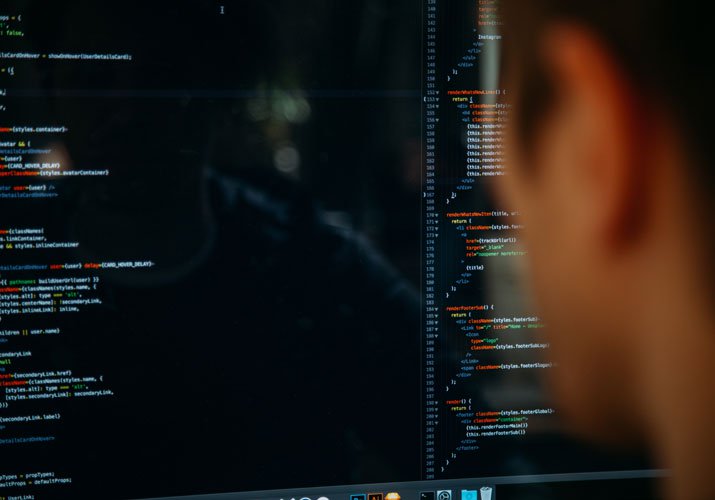Brain Corp Staff | 6 October 2020

As air travel begins to resume its normal pace, airports face new challenges in maintaining sanitation standards while keeping travelers and employees healthy.
The aviation industry has been greatly impacted by the COVID-19 crisis: With fewer travelers and heightened restrictions, airports were like ghost towns for several months. Now that air travel is returning to a more regular pace, airport industry professionals are turning to new technologies, such as autonomous robots, to keep facilities clean and regain the trust of travelers.
This was the emphasis in a recent webinar with Brain Corp, Tennant Co., and FlagShip Facility Services, entitled, “Solving Today’s Airport Cleaning Challenges: How to Restore Traveler Confidence Through Best Practices & Robotics.” The webinar, hosted by Airport Technology, featured Dave Frank, President of the American Institute for Cleaning Science (AICS); Chris Wright, VP of Sales at Brain Corp; and Don Toole, SVP of Sales and Marketing at FlagShip, a national leader in facility management.
The webinar opened with an introduction to the challenges that the aviation industry is facing in regards to cleaning during the era of COVID-19. With limited resources and 58% of travelers reporting that they are avoiding air travel due to virus risk, airports are looking for new ways to restore traveler confidence, according to new research1. While germs are a concern for travelers in airports in general, 38% are most worried about airport restrooms, which require careful attention from cleaning staff.
By using autonomous mobile robots (AMRs) to clean floors, airport employees can focus their energy on cleaning high-touch areas like restrooms, gate chairs, and ticket counters, ensuring a safe and sanitary experience for travelers. Brain Corp’s Wright explained that BrainOS®-powered robotic floor scrubbers are easy to deploy, and can be operated by staff members of all sorts of backgrounds, including those who have limited experience with technology.
Toole, who’s company services several large airports around the United States, offered his expertise in using BrainOS-powered autonomous solutions to maintain cleanliness at several national airports, including San Diego International Airport, Salt Lake International Airport, Phoenix Sky Harbor International Airport, and many others. Below are three key takeaways from Don’s presentation.
1) Think about ROI in different ways – In the traditional sense, return on investment refers to dollars and cents. However, Toole recommends looking at ROI from a different perspective. For example, when an employee is given the role of robot operator, they have the opportunity to learn a new skill, and for many individuals, this is an exciting switch-up to their everyday routine.
In addition to this, robots create hours of productivity that can be used for other tasks that robots cannot do, such as sanitizing high-contact surfaces or helping travelers. So far this year, Toole said FlagShip has reallocated 6,000 hours through the use of robots, and expects to reach 10,000 by the end of this year. This is a major benefit of robotic solutions, he said.
2) Send robots out to clean during business hours – While cleaning the floors was once an after-hours task, robotic cleaners powered by BrainOS can safely navigate busy public areas like airports, during peak hours. This cutting edge technology means that floors can be cleaned more frequently, and more thoroughly. Sending out floor scrubbers during business hours also improves visibility to patrons, showing that facilities are being properly cleaned, Toole said.
When travelers see a BrainOS-powered floor scrubber scoot by as they walk to their gates, they can be confident that the airport is not only being sanitized regularly, but also prioritizes their health. This also means that travelers will see the employees who once were tasked with manually cleaning the floors working on higher level jobs, such as wiping down surfaces that are constantly being touched by different people—increasing their confidence in sanitation.
3) Be proactive and invest in robots sooner rather than later – If there was one point that Toole truly wanted to drive home, it’s that now is the time to invest in robotics. For 20 years, FlagShip Services has been looking at robots, waiting for the technology to improve and become cost-effective. When the company learned about autonomous floor scrubbers powered by BrainOS, they knew it was time to act, and haven’t looked back. With the robots they currently have deployed in US airports, FlagShip has seen excellent results, and the company is looking to expand their fleet to 16 by the end of 2020.
Now that robots have reached the point in which they are easy to deploy and simple to operate, the benefits start right away. BrainOS-powered autonomous scrubbers also provide cloud-based performance metrics and real-time notifications, increasing efficiency and effectiveness. Especially with the added pressure to keep spaces clean, there’s never been a better time for high-traffic, busy public spaces like airports to adopt autonomous robot technology, Toole said.r time for high-traffic, busy public spaces like airports to adopt autonomous robot technology.
Taking to the Skies in the New Normal
Slowly but surely, the aviation industry is starting to resume its pace, but things are certainly not business as usual. Travelers are hesitant to fly, and are concerned with the associated health risks. In order to rebuild traveler confidence, airports must go the extra mile to ensure a clean and safe experience. With the implementation of autonomous cleaning robots, airports can show travelers they are keeping facilities as sanitary as possible, while also protecting the safety of employees. Additionally, as robots take care of cleaning the floors, labor for human employees can be reallocated to higher responsibility jobs, improving productivity. If you’re interested in learning more about robotics in aviation, view the webinar recording, check out our eBook, “A Flight Plan for Autonomous Floor Cleaning.”
1International Air Transport Association (IATA), 2020


Let Us Know What You Thought about this Post.
Put your Comment Below.